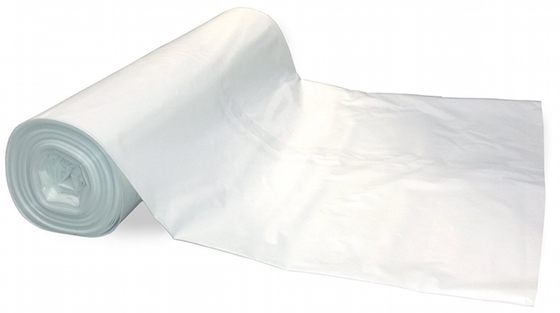High-Quality Vapor Retarders

This is the special vapor barrier that meets the ASTM standard.
DEAR TIM: My room addition is built over a crawl space. The air in our family room always smells musty. The foundation vents are open. The uncovered dirt in the crawl space seems very dry. We have no roof leaks or moisture in the exterior walls. What is causing the smell? O. R.
DEAR O. R.: Do you know the location of all of your teenager's socks? No, seriously, the musty smell in your family room can be traced directly to the uncovered dirt in your crawl space. The dry upper layer of dirt is creating an illusion.
Massive amounts of water are constantly being pulled to the surface beneath your crawl space. This process occurs 24 hours a day, 7 days a week. Just below the surface of the dirt, this water turns into water vapor. Water vapor is attracted to warm air. The air in your family room is almost always warmer than the air in your crawl space. The floor insulation and wood flooring do little or nothing to stop the water vapor in its constant pursuit of heat.
The only effective way to stop this water vapor migration is to properly install a high performance vapor barrier. Many builders, remodelers, and homeowners commonly mistake low density polyethylene plastic ( 4 or 6 mil poly) as being a high performance product. This material is often used in crawl spaces, beneath concrete slabs, or as a vapor barrier on exterior walls.
Often this product is manufactured using reprocessed plastic resins, scrap polyethylene, and fillers. The quality is sometimes inconsistent. Certain alkaline chemicals in soils can actually degrade the material. Small pin holes can exist in brand new material.
A better choice might be to use a high density cross laminated polyethylene vapor barrier. These products often are formulated from high quality virgin polyethylene. They are extremely resistant to punctures and tears. The high quality vinyl resists alkaline soils as well. They also do a much better job of stopping water vapor.
Installation of crawl space vapor barriers is not an easy task. All seams must overlap a minimum of 12 inches and be sealed with a special pressure sensitive tape. The vapor barrier must lap up onto the side walls of the crawl space. Here it should be caulked and attached tightly to the side foundation walls. Use three quarter inch furring strips and masonry nails for this job.
All objects (pipes, columns, masonry piers, etc.) that are sprouting from the soil beneath your crawl space require special attention. The vapor barrier must be carefully cut around these objects and sealed with pressure sensitive tape.
Prior to installing the vapor barrier, be sure the soil is smooth and free from all sharp objects. As you work on top of the material installing it, these sharp objects may tear or puncture the vapor barrier. These punctures or tears will allow water vapor to escape into the crawl space.
Author's Notes:
I received this email from Michael P, Cincinnati, OH. Here's how he helped with his crawl space problem.
"I live in Turpin Hills and wanted to thank you for your advice for sealing a crawl space. This is our third winter in our home and the basement is always much colder than previous basements from other homes. I did as you suggested and put heavy duty, thick plastic on the gravel and put doors on the opening of the crawl space. It's been a few weeks and I can see water droplets forming under the plastic. I may put a second layer of plastic for good measure. The basement is warmer and so is the room above the crawl space. I don't smell the mustiness either. Thanks again for the tip."
One Response to High-Quality Vapor Retarders